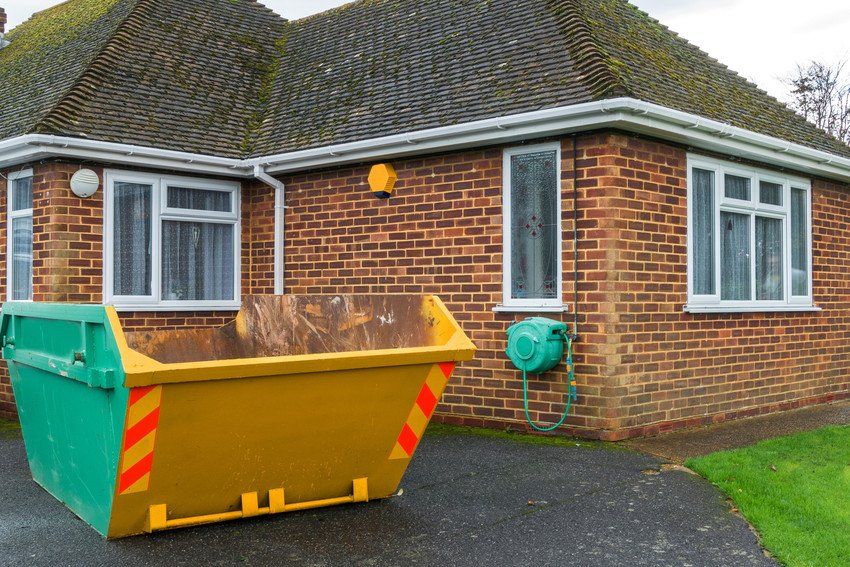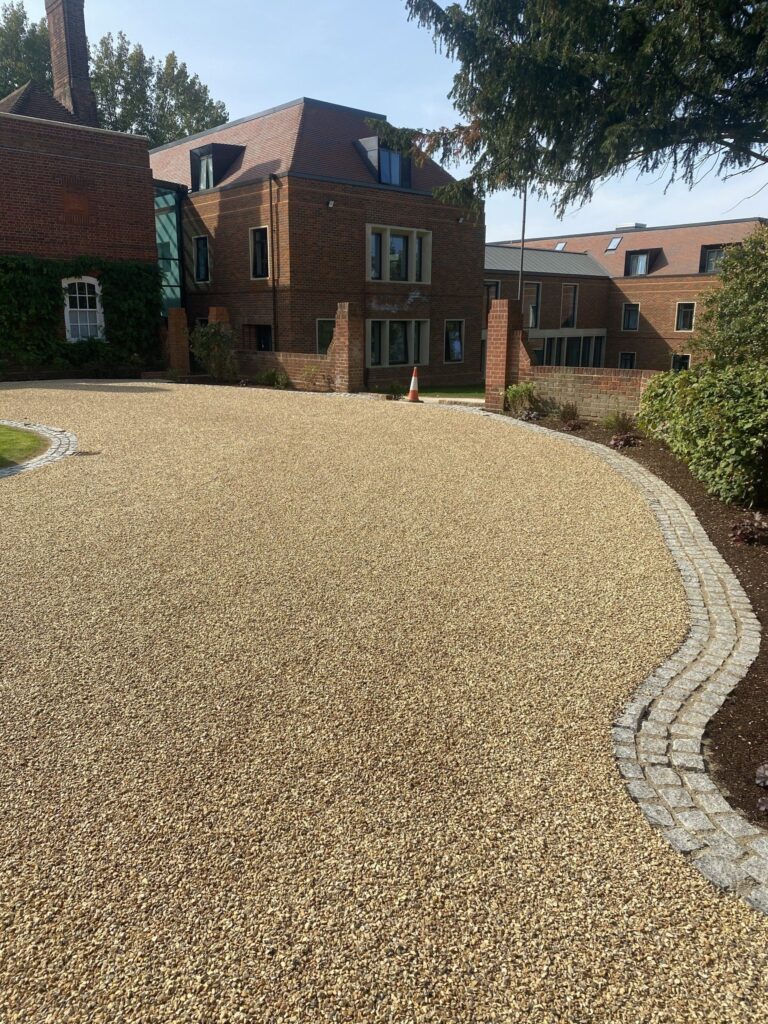Whether your project is at home or on a commercial space, you might be wondering where you can put your skip. There are some regulations, legislation and suggestions surrounding where you can put your skip – which, if you don’t follow them, can entail hefty fines or even removal of the skip if you don’t have a skip licence. To streamline your skip hire experience, read on to find out where you can put your skip.
The ideal spot for a skip is on your, privately-owned property. You won’t need a skip licence (otherwise known as a skip permit) if you are siting it on your own land.
However, not every property has adequate or appropriate space for a skip. In this case, you’ll need to use public roads or public lands – and that’s where you need to think a little further about the legalities you need to abide by.
The ideal place to site a skip would be on the driveway in front of your house. In this case, you wouldn’t need a permit (as it’s privately owned land), so you’ll pay less for skip hire. It’s also the closest journey from your house, so you will have easy access and minimise the space you need to cover when transporting things to the skip. You yourself will also be out of danger from any passing traffic, and equally, you’ll pose no danger to passing cars and pedestrians.
You’ll need a skip permit or licence if your skip will be placed on publicly owned land. This is so that the council can be sure that your skip is safely sited, and that it’s taken away at the end of your work. Your licence request will likely be refused if the council considers that the placement will endanger road users, reduce visibility for pedestrians or at a junction, or block access to property. You might also have your request denied if the council has already granted licenses to many skips on local roads at this time. In this case, you’ll have to apply again later.
You’ll also need a licence if it will be placed in a public car park or restricted parking area. For public or communal car parks, you’ll need to approach your local council for a parking bay restriction.
If you’re placing a skip on the road, you’ll have to adhere to some conditions. The skip cannot be an obstruction, nor can it cause other things to become obstructive due to its placement. Your skip also shouldn’t obstruct anyone’s access – whether to their driveways, houses, parks, or any other space, whether publicly- or privately-owned.
There are a few cases where you won’t need a skip licence, even if you are putting it on the roadside. Always approach your local council for further information.
Make sure of your skip’s dimensions – as well as ensuring you have the best-sized skip for your needs, knowing the dimensions will allow you to be 100% sure of the space your skip will occupy, and ensure you aren’t causing obstruction. There are often restrictions on the size of the skip (often an 8-yard skip is the maximum) you can choose if it’s going on public land, too.
Get in touch with the Hazel & Jefferies team to discuss the best skip choices for your needs.
Depending on your skip hire firm, they may do it for you. You must ensure you have contacted the council and obtained a licence in place before your skip arrives, whether you do that yourself or through the hire firm. Make sure to confirm either way, with your hire firm.
Permits usually last for one or two weeks, depending on your council. To extend that period you’ll likely need to pay a fee. You may face a large fine if you go beyond your skip permit length without notifying the council.
Skips can’t be placed on uneven, bumpy ground. Neither can they be placed on loose surfaces, like gravel. If you need advice, get in touch, but in short, you need to ensure the ground it will be placed on is solid.
Skips can be placed on sloped drives, but the extent of the slope should be discussed with your skip hire firm. Placing it down is rarely a problem, but it won’t be retrievable from a steep slope, without the danger of swinging and dislodging its contents.
A skip can usually be sited on grass without a problem, as long as it’s firm and even. You should be aware that the skip can cause damage to the grass, though – so if you’re proud of your lawn, you might want to consider other options!
Skips can usually be lifted over small hedges and walls – providing they are no higher than four feet high. Three feet is an ideal maximum but check with your firm for their restrictions. Checking with your skip hire firm is the best way to ensure your skip delivery can go without a hitch.
You will be responsible for keeping your skip covered when not in use (for example overnight), and for making sure a flashing light and reflective strips are in place, making your skip obvious to any passing traffic if it’s on public land.
You must make sure that your skip isn’t filled beyond the maximum fill line, that it’s been responsibly filled (bulky items at the bottom and smaller items slotted in available spaces), and that you’ve ensured that no prohibited items are in your skip – check out our list of prohibited items in this blog.
You must also use a credible waste management firm or skip-hire firm. That’s to ensure that your waste is carefully and responsibly disposed of once it is removed – recycled wherever possible – rather than fly-tipped. Good firms will give you a ‘waste transfer note’ when they remove your skip.
This is one of the instances above where you will need a permit. Although it’s perfectly possible to site your skip on a pavement, you must make sure you have a permit from the council before any skip can be delivered.
If you can park your car there, we will get a skip there. To be placed far back on your drive we’ll likely need a width of nine feet. Without this width, the skip can still be placed, but will just have to be placed nearer the front of the drive.
Have we answered your skip questions? If you have any further queries about where you can put your skip, get in touch with Hazell & Jefferies today and we’ll help you make the best choice for your waste disposal needs.

